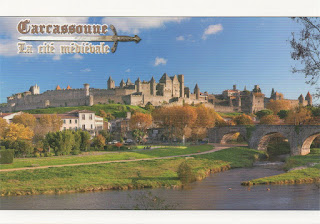Guanajuato was an important centre of silver-extraction and is home of one of the most beautiful Baroque churches in Central and South-America
 |
| La Valenciana Church |
This postcard was sent by Steffi
La Valenciana is one of several churches that were built at the openings of mines in Guanajuato, such as the Cata and Rayas churches. The building of this church was sponsored by Antonio de Ordóñez y Alcocer, to give thanks to his patron Saint Cajetan (San Cayetano in Spanish) . The La Valenciana mine was first worked in 1558, but abandoned in 1559 as it was thought to be exhausted.
Construction of the church was begun in 1775 under architect Andrés de la Riva and master carpenter Manuel Antonio de Cárdenas. Both died before the project was completed, with their roles taken over by Jorge Archundia and José Simón Cayetano Tovar respectively. The project was completed in 1788, with the dedication to Saint Cajetan. The family of the count also intended to found a monastery for the Theatine order, constructing a house for the monks, but it was never occupied.
Since its construction the church has lost a bell tower and several saints from its facade. In 2014, concerns have been raised about the church’s condition, especially the remaining bell tower, mostly from water damage and the accumulation of dust on the altarpieces. - in: wikipedia











































